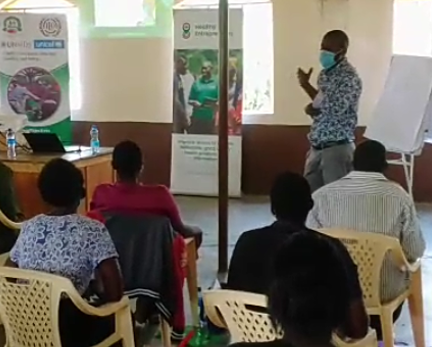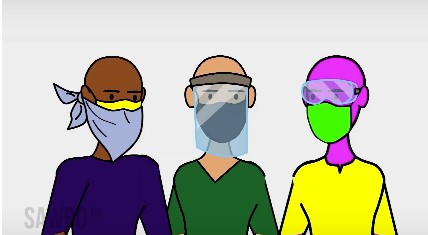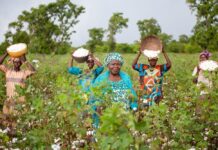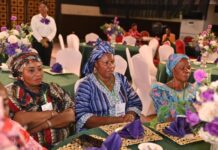
Jacob Omondi works in community health and is passionate about helping his fellow Kenyans. So, when he found out about an educational program designed to help Kenyans mitigate the secondary effects of COVID-19 using video animations, he grasped the opportunity with both hands.
The program, the Feed the Future Scientific Animations Without Borders Responsive Adaptive Participatory Information Dissemination (SAWBO RAPID) project, uses animation to teach simple things that people can do to empower themselves during times of crisis.
SAWBO RAPID is funded by USAID and serves as an educational intervention to disseminate crucial information related to COVID-19’s secondary economic impacts, including disruption to trade, supply chains, and markets. The project relies on organizations and individuals, like Jacob, to disseminate the content across communities.
“Scientific Animations Without Borders, or SAWBO as it is known, has over 10 years of experience creating global educational animations and studying their impact,” explains co-founder, Julia Bello-Bravo. She and the SAWBO team have published over 35 peer-reviewed journal articles and book chapters on scaling of life-improving educational materials using local language adapted animations.

“The SAWBO RAPID project is interesting because it targets marginalized communities in Bangladesh, Ghana, Kenya, and Nigeria as identified by USAID. This has really provided us an opportunity not only to have immediate impact on the people of these regions during a pandemic but has also provided an opportunity to explore new deployment pathways as many of these areas are remote,” says John Medendorp, co-PI of the SAWBO RAPID program.
Jacob learned of the SAWBO RAPID project through Kataru Concepts, a knowledge management organization that actively disseminates digital content through a volunteer network that covers 47 counties and 310 constituencies of Kenya. The organization focuses on agriculture, health, and social development topics to uplift the living standards of their community. Omondi is a Kataru Concepts volunteer, and Kataru Concepts is a SAWBO knowledge partner. Together they work to disseminate SAWBO and SAWBO RAPID content.
The first SAWBO RAPID amination Jacob shared was “Postharvest Loss: Jerrycan Bean Storage”. The animation explains how to avoid insect pest damage when storing beans after harvest using a jerrycan. This simple technique allows for dried beans to be stored safely for long periods of time, ensuring food security when other food sources may be reduced by the effects of the Coronavirus pandemic, which has periodically closed markets and trading.
According to Barry Pittendrigh, SAWBO co-founder and co-director, “if we look at the SAWBO animations as part of a product life cycle, each animation is a finalized product ready for others to scale and have impact in their communities. Jacob’s work through Kataru Concepts exemplifies how each animation is a readily available product that can be used for scaling and impact.”
Omondi has also shared the SAWBO RAPID animation, “Properly Wearing Facemasks” and other SAWBO videos, “Malaria Prevention” and “Sickle Cell Disease”.
He works for Healthy Entrepreneurs which is a social enterprise involved in community health strategy. His work is primarily in the Western and Nyanza regions of Kenya. He has shared the videos to other community health workers and taught them how to use WhatsApp to disseminate the video further.
“The videos are easy to share, and having them available in local dialects is especially helpful,” explains Omondi. “It has been fun to share the videos, as the learners are attracted to the animations. I feel like this sort of information and how they are packaged can really change the lives of our people.”








